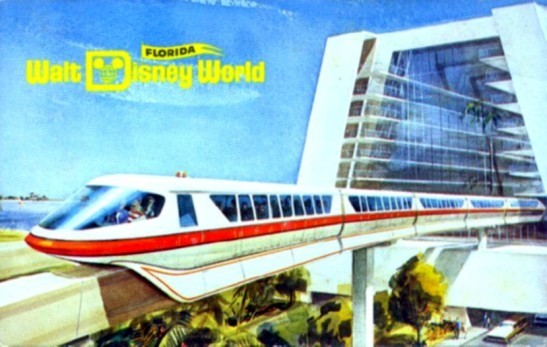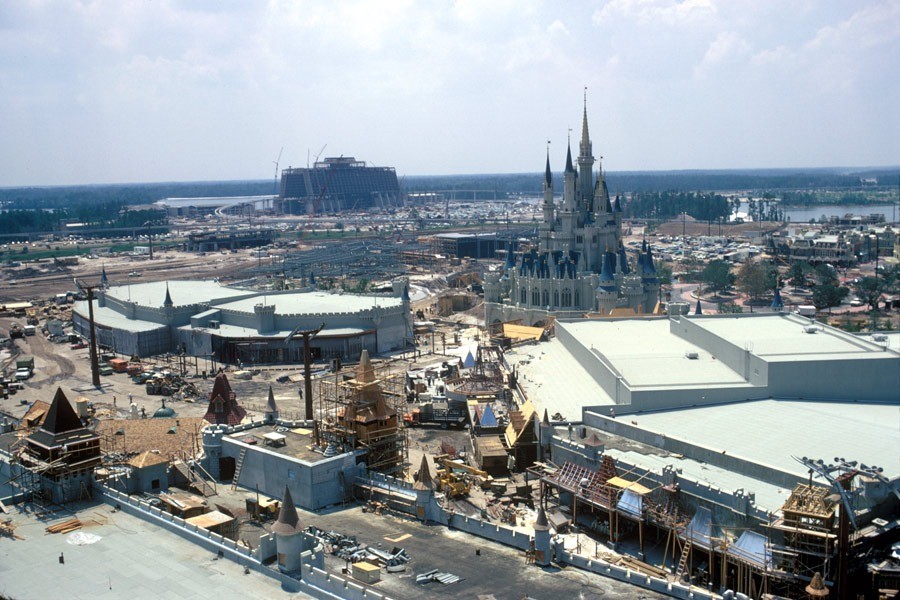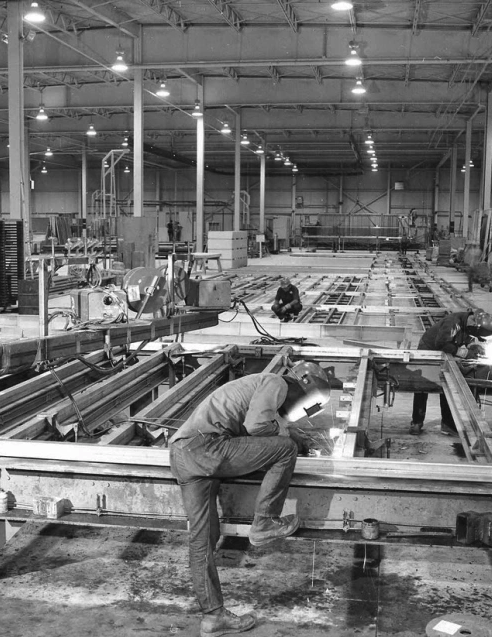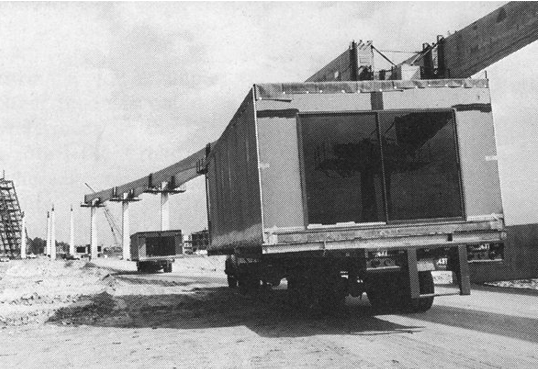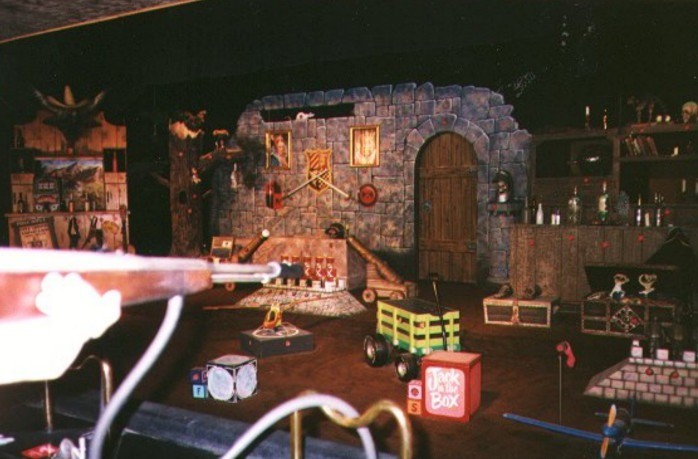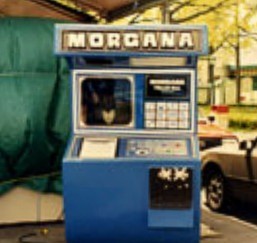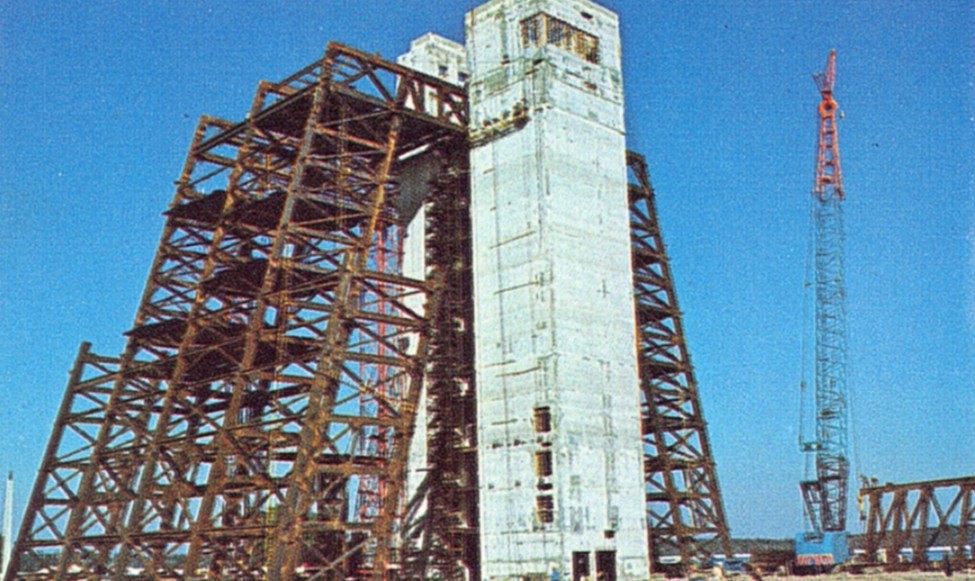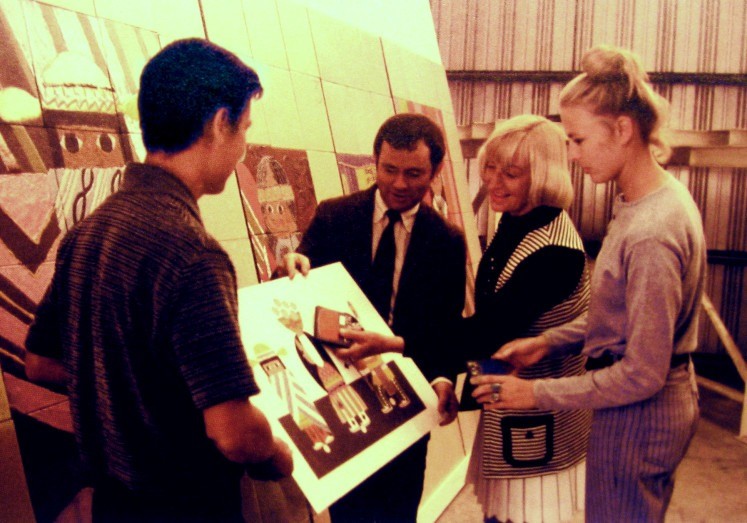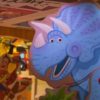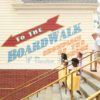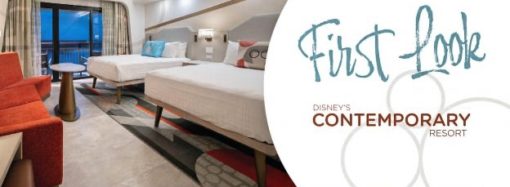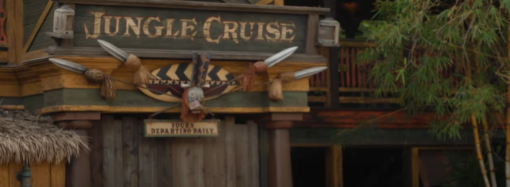As the Walt Disney World Resort is preparing to celebrate its 50th Anniversary on 1 October, Disney Matters is looking back at the history of the park.
When one uses the words landmark and iconic, they typically refer to objects and places that are instantly recognizable by virtually everyone, anywhere on the planet. These words can easily be applied to things like the Statue of Liberty, the Eiffel Tower, and the Taj Mahal. But for a theme park and resort complex? Never… well except for one place, Disney Parks.
In addition to Mickey Mouse, who is one of the most recognizable symbols in the world, Cinderella’s Castle, Epcot’s Spaceship Earth, and a number of other Walt Disney World buildings also fall into that category. Another Disney landmark that falls into that group is the Contemporary Resort Hotel.
The Contemporary Resort Hotel and the Polynesian Village Resort (as it was known in 1971) were the first two hotels to open with Walt Disney World on October 1, 1971. On opening day, it truly lived up to its name, but to truly appreciate this resort, one must understand the hotel’s history.
In 1964, Walt Disney puts “Project X” (later known as “The Florida Project”) into motion. After Walt’s death in December 1966, Roy put most of Walt’s plans for EPCOT the city on hold; however, he incorporated many of EPCOT’s ideas and companies – already onboard – into the creation of the new Florida park and resort. The birth of the Contemporary Resort Hotel came from Walt’s vision for his “Progress City,” as well as the involvement of US Steel.
THE BIRTH OF THE CONTEMPORARY RESORT HOTEL
One of US Steel’s subsidiaries, American Bridge, had been experimenting with modular construction. They had been promoting constructing, assembling, and furnishing rooms off-site and then stacking them next to the skeleton of the building and then slot each room into the frame of the building. One “fact” that is very prevalent out there is that not only were the rooms made to be easily removed, refurbished, and slotted back in. However, the fact is the rooms were never intended to be removed. When the building was constructed and the rooms were slid into the steel frame, concrete was poured and the rooms were permanent.
Disney’s original agreement was that they would retain the land these hotels were built on and US Steel would build and own the hotels. Disney would then lease and run them. There were concerns over the financing for the Florida project so mergers were briefly considered. One of the first mergers considered was with General Electric – which happened before Walt died. According to Bob Thomas, “Roy faced the formidable task of financing… Bankers and financiers told Roy that such an investment was too great [$100 million] for a company the size of Walt Disney Productions. He was advised to seek a large corporation as a partner. GE was approached…” The negotiations ended shortly after Walt realized the merger would put GE execs in charge and that Walt would become an employee and could be fired at any time. Other mergers were contemplated, including Westinghouse, but ultimately Roy found a way to go it alone. Roy was “besieged by suitors” after Walt’s death. But one thing he (and Walt) had learned early in his career was to share ownership with no one.
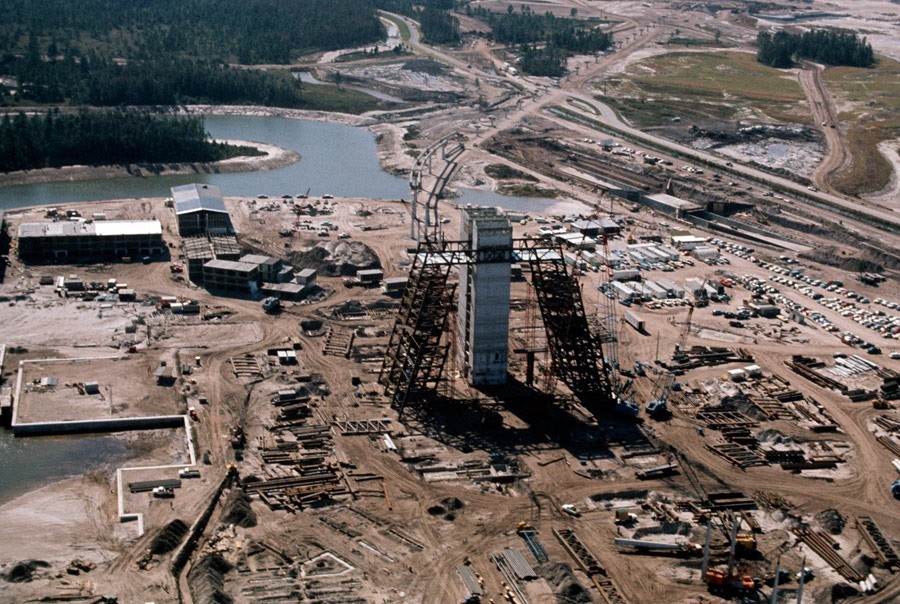
Originally five hotels planned to surround the lake and face the park. Each hotel would be specifically themed and would complement the view of the theme park. The flagship hotel would be the most futuristic or contemporary in design – based on Walt’s vision for the high-rise multi-use structure he envisioned for the center of EPCOT. The original structure was to be a “city” with an open-atrium building complete with shops, restaurants, and a monorail running straight through the building. Because of this hotel’s futuristic elements, it would be positioned in line sight of Tomorrowland.
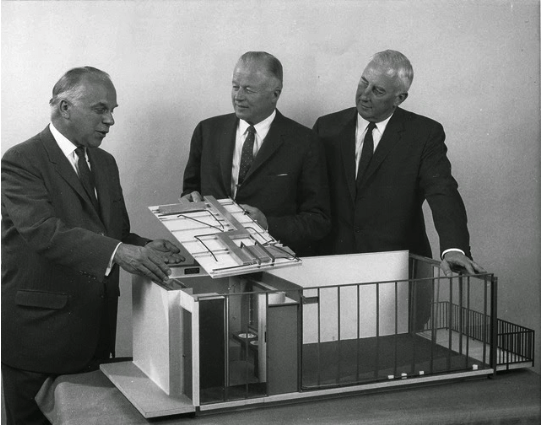
US Steel’s vision for this hotel turned it from a high-rise to an A-frame hotel. The design firm of Becket Associates came up with the architectural elements for the resort. Marvin Davis, of the Walt Disney Company, served as a liaison for the project. It was Davis that made the hotel less of a shoebox feel and more accessible from the outside. The final design of the hotel would see the main building standing at 184-feet high, 468-feet long, and 220-feet wide.8

There were a number of obstacles that Disney had to overcome in constructing the A-frame hotel. One obstacle was that they realized that they couldn’t just quickly slide the rooms because if all the rooms were slotted in on one side of the structure first it would not only compromise the integrity of the building, but it would also throw the hotel frame off balance. So they had to set up two cranes on either side of the A-frame and alternately slot in the rooms. The monorail caused another problem. Originally plans called for the monorail to run straight through the middle of the hotel, however, the vibration from the monorail cause the hotel to shake. The contractors said it would be impossible to run the monorail through the hotel. Walt’s planners argued that without the monorail the hotel would resemble, “a place where the Goodyear blimp comes to mate.” Roy realized that without the monorail the Contemporary would be no different than any of the Hyatt style atrium hotels. All Roy said was “build it.” After reengineering the hotel multiple times, engineers decided to move the monorail to one side of the hotel and anchor the track to the ground and not the building.
The name of the hotel even has a story. In David Koenig’s book, “Realityland: True-Life Adventures at Walt Disney World,” the working title everyone referred to the hotel as was the Contemporary Hotel. Marty Sklar always had reservations about using that name as it might “stick.” In early 1971 they came up with the permanent name, the Tempo Bay Hotel. Roy Disney had also known the hotel as the Contemporary Hotel and when he saw the plans for a Tempo Bay Hotel he wanted to know what that hotel was. When he learned the Contemporary was only the working title, he said, “I just don’t like it. I like Contemporary. I like names that are simple and say what they are. The other name is phony and plastic.” Shortly after that everything was changed – again – and the hotel bore its new name – the Contemporary Resort Hotel.8

To help learn the hotel business, Disney leased the Hilton Inn South in Orlando, Fla., which opened in May 1970, and used the 140-room hotel as a kind of living laboratory, developing everything from training manuals to restaurant menus later used in its own resorts.
The remaining “Phase One” resorts, inspired by Asian, Venetian, and Persian motifs, never made it off Imagineers’ drawing boards.
THE CONTEMPORARY RESORT HOTEL OPENS – FINALLY
Another misconception – that has become fact – was that construction on most of the resort was running on or close to on time, however, the Contemporary was a different story. In fact, construction was a challenge in and out of the entire park. For example, in the fall of 1970, only about 1 year from the scheduled opening, the main contractor hired to oversee construction announced that the timeline was unrealistic and suggested that Disney change the planned opening date. Within days of that announcement, Joe Fowler & Joe Potter – filed the necessary paperwork to create Buena Vista Construction. In the spring of 1971, after a visit east to check on the state of the construction, Dick Nunis was asked if he honestly believed that the resort would open on time. His response was “only if we put the entire force of the Disney company behind the effort.” Shortly after Nunes moved to Florida on the reassurance that if he needed anything from another department, he would get it. Over the next few months, he and his team became known as “the Nunis Raiders.”
The hotel was plagued with various setbacks and difficulties, both great and small. Everything from workers sleeping on the job, creating phantom employees, cashing additional checks to stealing. The park opened on time, but it took a few more months to finally complete the Contemporary Resort Hotel tower and garden wings.
According to Charles Ridgway’s biography, “Spinning Disney’s World,” the Thursday before opening there were still giant construction cranes towering over the Contemporary…, in addition to spoiling the view for the first guests, it went against everything Disney stood for. So the cranes were dismantled, laid down, and promptly covered with grass for the rest of the weekend. They went back up that Monday and stayed looming and working over the hotel until the day before the Grand Opening. In the end, the hotel was completely finished in the New Year, but enough of the rooms were ready to accommodate the Grand Opening day guests and various activities.
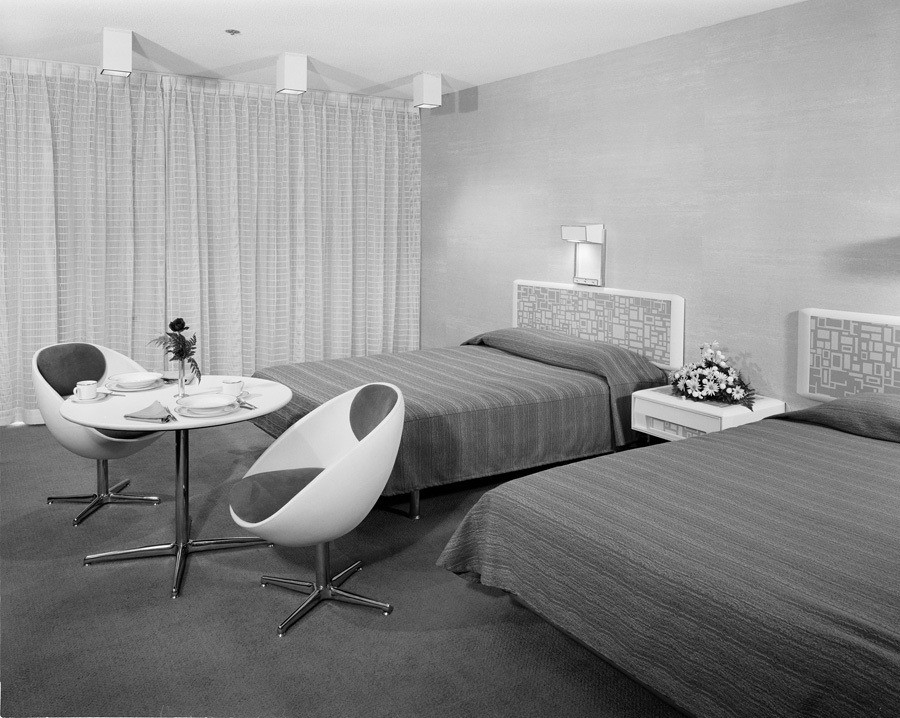
During this whole process, the Disney-US Steel relationship increasingly grew strained. So much so that it was a constant bother to Roy Disney. A few weeks before Roy’s death, he negotiated a deal with US Steel to not only buy their interest in the hotel but also assume all remaining construction costs. When the hotel finally did open to guests – those lucky enough to stay there were paying the “exorbitant” room rates ranging from $28.00 to $44.00 per night. Original dining outlets included: Grand Canyon Terrace Cafe, Grand Canyon Terrace, Top of the World, Gulf Coast Room, El Pueblo, The Dock Inn, Monorail Club Car, The Sand Bar, and the Mesa Grande Lounge. As for shopping: The Contemporary Man, The Contemporary Woman, Plaza Gifts & Sundries, Kingdom Jewels Ltd., The Fantasia Shop, The Spirit World, The Captain’s Chair, The American Beauty Shoppe, Bay n’ Beach, and The Olympiad spa and gym.
Walt Disney World officially was dedicated on 1 October 1971. The opening ceremonies were then broadcasted a few weeks later on 29 October on “The Wonderful World of Disney.” There were a number of celebrities in the show including Glen Campbell, arriving at the Contemporary by boat and Julie Andrews in the Magic Kingdom. There is an aerial shot of Monorail Green gliding towards the Contemporary Hotel and sailing right into the hotel. After the doors open up two Disney Hostesses step out with Bob Hope. He does about eight minutes of stand-up on make-shift steps next to the monorail platform.
The Contemporary Resort Hotel was designated as the flagship hotel for Walt Disney World. As such, it was to provide any service the guest needed. Given the fact that when it opened, both the Contemporary Resort and the Polynesian Village Resort were basically removed from “civilization” therefore by their very nature, needed to be fairly self-sufficient. So services like a drug store, liquor store, smoke shop, jewelry shop, florist shop, tennis shop, beach shop, game room, men’s and women’s hair salons, as well as separate men’s, woman’s and children’s clothing stores were found at the resort. As the hotel was considered “flagship” and “luxury,” these services, at the time, became loss-leaders and very rarely, if ever, broke even, let alone turned a profit.
THE CONTEMPORARY RESORT HOTEL – PAST, PRESENT & FUTURE
Back in the ’70s, when guests entered the Contemporary Resort hotel, from the ground floor, and headed left just past the reception desk they would have encountered conference & meeting rooms. That quickly then became the Fiesta Fun Center, a game room and arcade, movie theatre, and 24-hour snack bar. Years later the center’s name was changed to the Food and Fun Center. Today it is home to the Wave Restaurant. On the second floor was the Gulf Coast Room, one of two restaurants that required men to wear jackets – the other was the Top of the World,4 now known as the California Grill.
Going through a large doorway, into the Fiesta Fun Center (now the archway leading into the Wave Restaurant), guests went down a short flight of steps. There was a large snack bar on the right side offering hot dogs, nachos, french fries, and sodas. Past the seating area, the game room had numerous pinball machines, shooting games, video games of every description, and several novelty machines including Morgana, a fortuneteller housed in a blue box. When you put your quarter in and selected your zoological sign, a woman’s face would appear on a head-mounted inside a viewing window – a la the Haunted Mansion. She gave a few seconds of mystical insight and then would vanish. In the back was a theater that showed Disney movies, and a few skee ball machines. In the room’s southwest corner was a light-activated shooting gallery. The Shooting Gallery survived only until the mid-1980s, but the game room (later the Food & Fun Center) received a few updates before closing and being converted to The Wave Restaurant. Some of the games were then relocated to the 4th floor in an area that was once the original Fantasia shop.

The 4th Floor or Grand Canyon Concourse Level of the Contemporary Resort Hotel has seen the most dramatic and constant change to the resort. In the beginning, the north end of the Grand Canyon Concourse Level housed a souvenir shop, Plaza Gifts and Sundries, and The Spirit World. Here guests could buy Disney merchandise, toiletries, flowers and floral arrangements, food and snacks, soft drinks and liquor, and tobacco products. Today it is known as Concourse Sundries & Spirits. On the opposite side were the Contemporary Man, the Contemporary Woman, and Kingdom Jewels, Ltd., where guests could purchase men’s and woman’s clothing, beachwear, costume and fine jewelry, as well as watches. Today the entire location is home to Bayview Gifts. Fantasia Gifts, which stands between these 2 shopping areas in the middle of the Concourse used to be an open lobby space with some seating. 4, 7
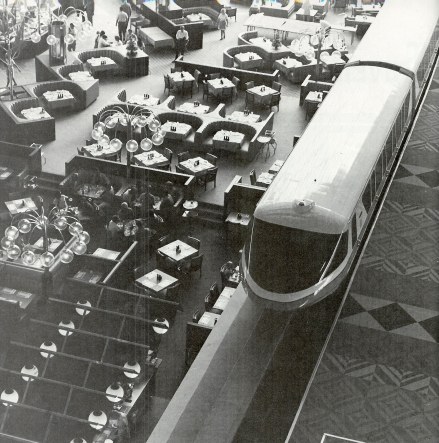
On the south end of the Grand Canyon Concourse, the dining areas have seen tremendous changes in recent years. Today’s Contempo Cafe was originally the home to the Terrace Buffeteria, also known at the Grand Canyon Terrace, and later the Concourse Grill, and then the Concourse Steakhouse. The current version of Chef Mickey’s saw a number of incarnations including the Pueblo Room, Contemporary Cafe, and Coconino Cove (also referred to as Coconino Grove). The space before Coconino Cove was air. Actual air! There was nothing there originally but the outside of the building. They built out to make the Coconino Cove cocktail lounge and today it is the dining area for Chef Mickey’s. Today, Chef Mickey’s is one of the most popular character dining restaurants. From empty space to the Monorail Club Car, the area is now the Outer Rim Lounge. 4
Moving up to the 15th floor, the Top of the World (also known as the Top of the World Supper Club) was not only the place to be, but also to see classic Vegas-style performers like Mel Torme, Donald O’Connor, Rosemary Clooney, Barbara Eden, Phyllis McGuire, and many more. There was also dinner and dancing to the Top of the World orchestra. In the early 1980s, the Top of the World premiered a show called “Broadway at the Top.” Top of the World, along with Mesa Grande Lounge – later called the Top of the World Lounge – offered some of the best views of the Magic Kingdom, the fireworks, and the most scenic brunch around. The Top of the World was also not profitable but was also considered necessary not only from a prestige point of view, but it gave guests something to do after dark. The Top of the World closed in 1993 to make way for the current California Grill Restaurant.1, 4, 7
The Walt Disney World Resort continued to grow in popularity throughout the years and just as each of the theme parks was a major attraction, people flocked to the Contemporary Resort Hotel and the Polynesian Village Resort as if they were… and did become… attractions in their own right. To this day, all of the Disney Resort hotels have become attractions. Gradually more and more groups started holding meetings and conventions at the resort hotels – easily mixing business and pleasure. Seeing the need to be able to continue to host larger groups and shows, in November 1991 Disney opened a 90,000 square foot convention center on the southwest corner of the hotel property where a parking lot once stood. They got an A for effort, but a D for not keeping it in the same style.
THE GRAND CANYON CONCOURSE MURAL
The Contemporary Resort Hotel is known for a number of things. In addition to the A-frame structure, slotted rooms, and monorail, the resort is also known for its soaring 90-foot mural.
Given Walt Disney’s fascination with the Grand Canyon, it’s no surprise that many aspects of the Grand Canyon pop up throughout the cavernous Contemporary.
The mural was designed by Mary Blair. Mary was an animator and an Imagineer, as well as a Disney Legend. She worked on many Disney projects from the “Three Caballeros,” “Song of the South,” to “Cinderella.” Because of her use of color and the child-like way she approached her work, Walt had asked her to work on a new project he was working on for the 1964-65 New York World’s Fair – it’s A Small World. What Mary created for the Contemporary Resort was the world’s largest handmade mosaic featuring a modern southwest theme in the classic Mary Blair style.
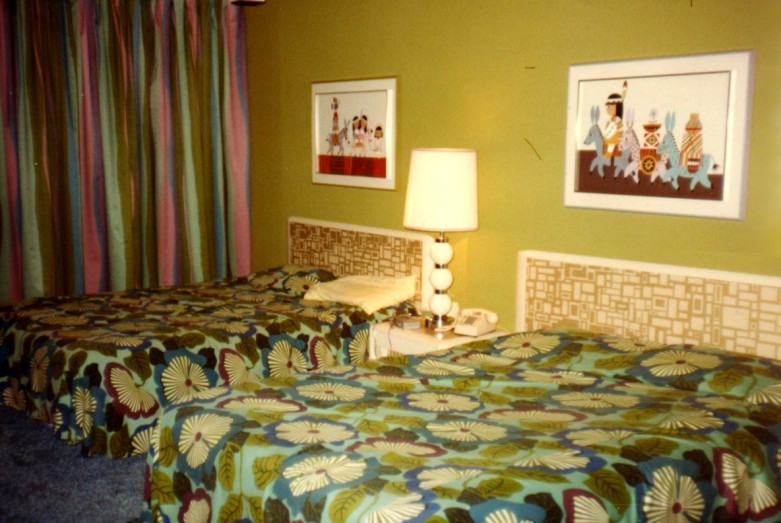
The mural, which took more than a year and a half to design, produce and install on the six, ninety-foot walls, consists of more than 18,000 hand-painted tiles. In the mural, Blair created Southwest Indian children, stylized birds, animals, flowers, and trees. These images were also originally used throughout the resort, in the lobbies, and as framed prints in each of the hotel’s rooms. The giant mural conceals the hotel’s elevator shafts. The side that faces the monorail features a goat with five legs, up near the top. Blair did that to honor the culture of the Grand Canyon Indian tribes who felt that artwork could not be “perfect.”
Her inspiration for the mural came from a broad spectrum of resources, including prehistoric petroglyphs, Pueblo murals, and Navajo ceremonial art, such as sand paintings. The mural and concourse colors reflect earth and sky tones found in and at the Grand Canyon, as well as in Indian art. Each of the more than 18,000 individually hand-painted and fire-glazed ceramic tiles was shipped from California to Florida on special air-suspension trucks. The glazes used on the ceramics are both mineral and chemically based – the color pink, for example, is made from gold.
Currently, the resort is transforming the guest rooms themed to “The Incredibles.” Although they represent a version of something “contemporary,” it is a stark juxtaposition to Blair’s mural.
ALMOST IMMEDIATE REDECORATING
When the park opened, people flocked to the resort and clamored to stay at one of the only two hotels right at the Magic Kingdom. The 1000+ rooms were full all the time. Since the average stay was two to two-and-a-half days, room turnover was tremendous. Because of that, the wear-and-tear on the rooms was magnified. As such, room refurbishment began almost immediately. In the fall of 1972, Disney started a continuous rehab of eight rooms at a time and by 1975, every room at the Contemporary Resort Hotel had been completely overhauled from top to bottom…only to start again. New carpeting, drapes, and color schemes were done to each room, large maps of the Magic Kingdom hung in each room, and the wallpaper was replaced with vinyl wallpaper to make for easier cleaning. To reduce “souvenir seekers” from acquiring items not sold at the resort… everything that originally had the Walt Disney World logo on it – from dishes to towels to trash cans and virtually anything that wasn’t nailed down – was removed and replaced with more generic ones.
THE NORTH GARDEN WINGS TAKES FLIGHT
In November 2006, Disney filed plans for a project on the site of the Contemporary Resort’s North Garden Wing, and a construction fence was erected, encompassing the wing, part of its parking lot, and the Disney’s Racquet Club. The North Wing itself was demolished starting in 2007 and construction on the new building continued throughout the year… with Disney never making an official announcement as to what was actually being built.
Originally dubbed “Project Crystal” in the Disney boardrooms9, Disney finally unveiled the plans in September 2008 with its official name, Bay Lake Tower at Disney’s Contemporary Resort. The units are not only part of an offering from Disney Vacation Club, but also some units have been set aside for regular guests. Some of the resort’s features include full-length windows with views into the Magic Kingdom or onto Bay Lake; some bathrooms on the Magic Kingdom side include movable partitions to permit watching the park’s fireworks displays from the bathtub.
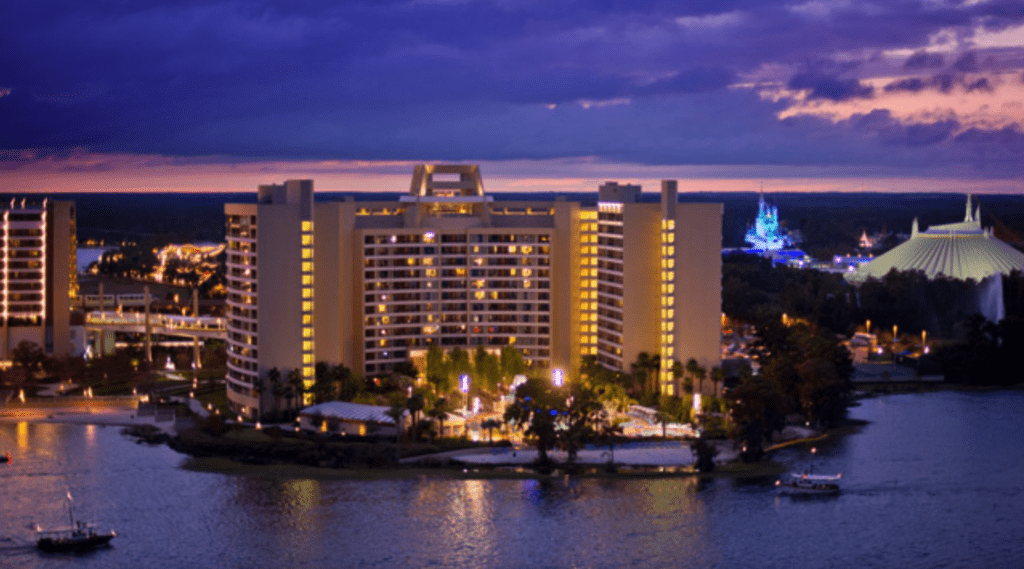
The tower has a pedestrian bridge connecting to the original A-frame tower and includes amenities of its own, such as a swimming pool with a water slide, tennis and shuffleboard courts, a zero-entry pool, and a cookout pavilion.
Atop Bay Lake Tower is a “resurrected” Top of the World Lounge. The lounge, which is only accessible to Disney Vacation Club Members after 5;00 p.m., includes a viewing deck and also an indoor seating area with a full bar and appetizers. The Magic Kingdom fireworks display can be seen from the viewing deck with the firework’s music simultaneously piped in through speakers along the deck’s wall.
Unlike the convention center, which is perceived as a total disconnect in design to the Contemporary Resort Hotel, Bay Lake Tower is a perfect complement to the resort. The new tower, which opened on 4 August 2009, offers 295 units including studio, one-, two-, and three-bedroom units with a majority either facing the Magic Kingdom or Bay Lake.
In addition to the guest rooms getting an Incredibles makeover, The Wave restaurant is currently closed to guests as it undergoes its own refurbishment. The current rumor is it will be transformed into a steakhouse – possibly “The Incredibles.”
ONE MORE BIT OF CONTEMPORARY TRIVIA
Many presidents have visited both Disneyland and/or Walt Disney World, but none has had more of a connection than Richard Nixon. Vice-President Nixon and his family were at Disneyland to cut the ribbon to dedicate the monorail, visited Epcot prior to its opening, but what can be considered his most famous – and notorious visit – came on 17 November 1973, during the height of the Watergate crisis. President Nixon spoke in front of 400 Associated Press managing editors in one of the meeting rooms on the second floor at the hotel. During his speech, Nixon said, “People have got to know whether or not their President is a crook. Well, I’m not a crook.”
The Contemporary Resort Hotel is an ever-changing resort. No matter how many times you visit the Magic Kingdom, there are certain sights that immediately transport you back to your very first visit. The monorail gliding through the Contemporary brings you back every time.
References
1. Walt Disney World
2. Walt Disney World Preview Edition, 1970
3. Widen Your World, http://www.omniluxe.net/wyw/wyw.htm
4. Walt Dated World, http://waltdatedworld.bravepages.com/index.htm
5. Wikipedia
7. Wdwhistory.com
8. Realityland: True-Life Adventures of Walt Disney World; David Koenig, Bonaventure Press, 2007
9. Disney Files Magazine, Fall 2008, Volume 17, No. 3
10. Building A Company, Bob Thomas, Hyperion, 1998
11. Spinning Disney’s World, Charles Ridgway, The Intrepid Traveler, 200
This story originally appeared on WDWNT.com on 29 January 2010. The story, which has been updated, was reprinted with permission by the author.
